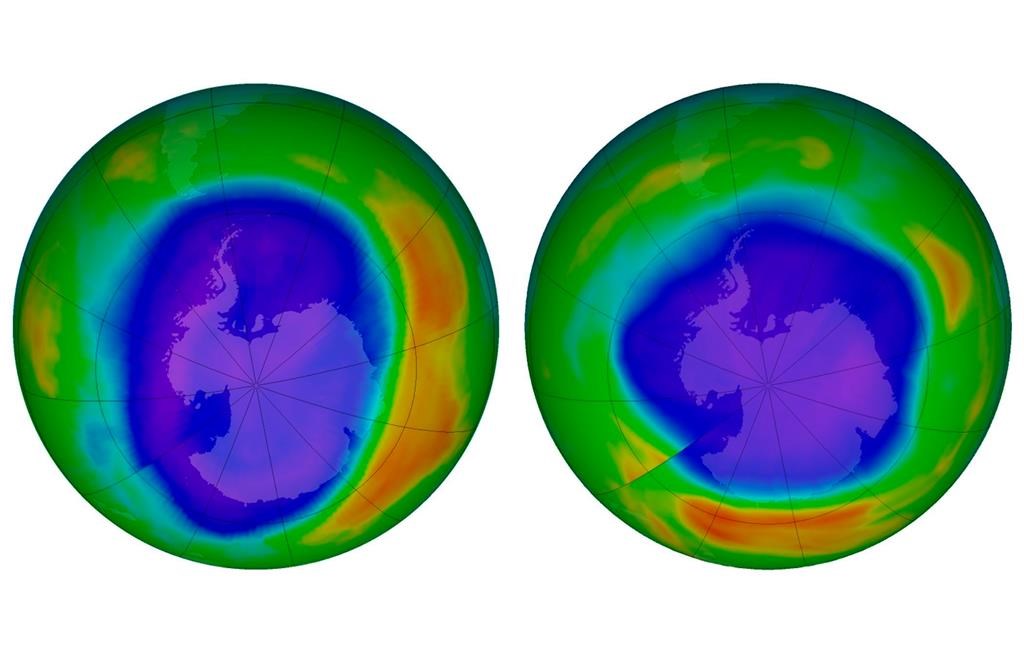Earth’s protective ozone layer is finally healing from damage caused by aerosol sprays and coolants, a new United Nations report said.

The ozone layer had been thinning since the late 1970s. Scientist raised the alarm and ozone-depleting chemicals were phased out worldwide.
As a result, the upper ozone layer above the Northern Hemisphere should be completely repaired in the 2030s and the gaping Antarctic ozone hole should disappear in the 2060s, according to a scientific assessment released Monday at a conference in Quito, Ecuador. The Southern Hemisphere lags a bit and its ozone layer should be healed by mid-century.
“If ozone-depleting substances had continued to increase, we would have seen huge effects. We stopped that.”High in the atmosphere, ozone shields Earth from ultraviolet rays that cause skin cancer, crop damage and other problems. Use of man-made chemicals called chlorofluorocarbons (CFCs), which release chlorine and bromine, began eating away at the ozone. In 1987, countries around the world agreed in the Montreal Protocol to phase out CFCs and businesses came up with replacements for spray cans and other uses.At its worst in the late 1990s, about 10 per cent of the upper ozone layer was depleted, said Newman. Since 2000, it has increased by about 1 to 3 per cent per decade, the report said.This year, the ozone hole over the South Pole peaked at nearly 24.8 million square kilometres. That’s about 16 per cent smaller than the biggest hole recorded — 29.6 million square kilometres in 2006.The hole reaches its peak in September and October and disappears by late December until the next Southern Hemisphere spring, Newman said.The ozone layer starts at about 10 kilometres above Earth and stretches for nearly 40 kilometres; ozone is a colourless combination of three oxygen atoms.WATCH BELOW: Online map shows impact of climate change on Canada’s boreal forests










Comments